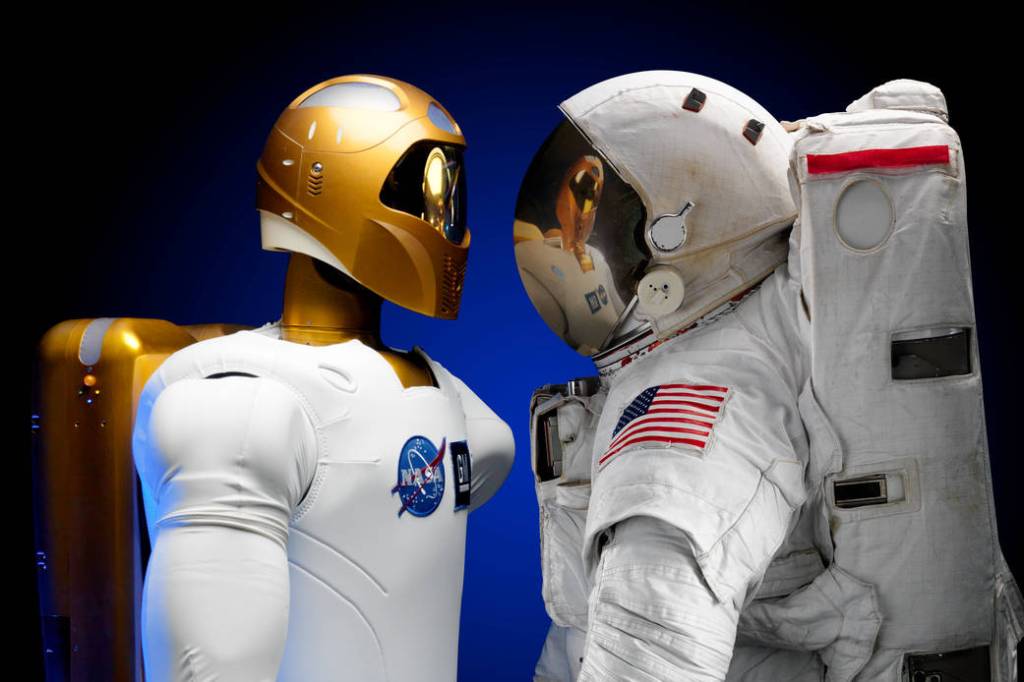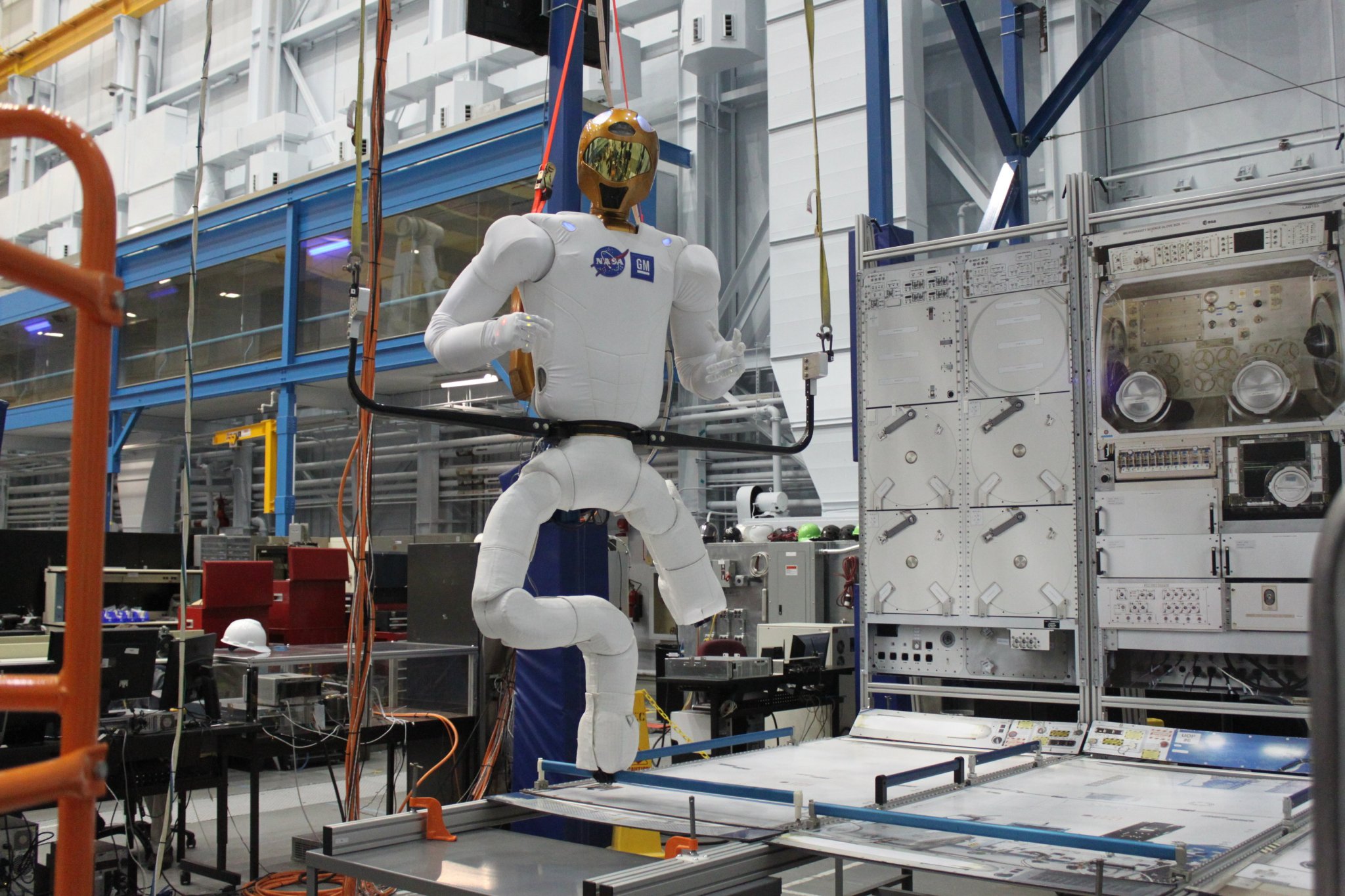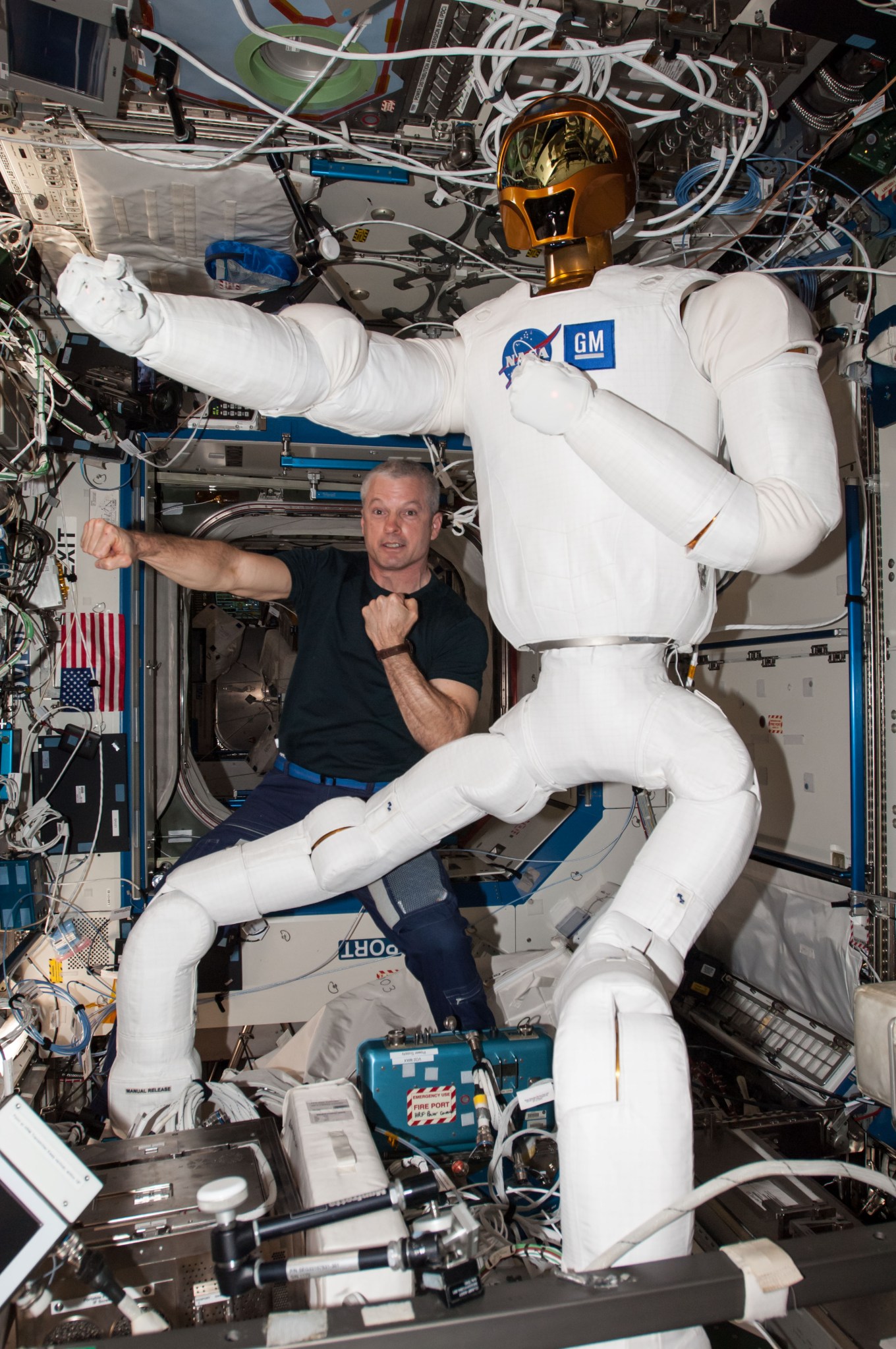ISS Mobility Upgrade
In 2010, the Robonaut Project embarked on a multi-phase mission to perform technology demonstrations on-board the International Space Station (ISS), showcasing state of the art robotics technologies through the use of Robonaut 2 (R2). This phased approach implements a strategy that allows for the use of ISS as a test bed during early development to both demonstrate capability and test technology while still making advancements on the ground. While R2 was performing experimental trials onboard the ISS during the first phase, engineers were actively designing for Phase 2, Intra-Vehicular Activity (IVA) Mobility, that utilizes a set of zero-g climbing legs outfitted with grippers to grasp handrails and seat tracks. In addition to affixing the new climbing legs to the existing R2 torso, it became clear that upgrades to the torso to both physically accommodate the climbing legs and to expand processing power and capabilities of the robot were required. In addition to these upgrades, new safety architecture was also implemented in order to account for the expanded capabilities of the robot.
The IVA climbing legs not only needed to attach structurally to the R2 torso on ISS, but also required power and data connections that did not exist in the upper body. The climbing legs were outfitted with a blind mate adapter and coarse alignment guides for easy installation, but the upper body required extensive rewiring to accommodate the power and data connections. This was achieved by mounting a custom adapter plate to the torso and routing the additional wiring through the waist joint to connect to the new set of processors. In addition to the power and data channels, the integrated unit also required updated electronics boards, additional sensors and updated processors to accommodate a new operating system, software platform, and custom control system.
In conjunction with upgraded firmware, a new control system has been developed to account for the increase in degrees of freedom, mobility capability, and increased performance demands for the system. The control system features a model-based coordinated controller that allows for seamless commanding in joint and task space, a large range of user-specifiable joint dynamics, and embedded impedance control. To compliment this new control system and increase in capability, a novel safety system has been certified as two-fault tolerant in excessive force protections, as well as single fault-tolerant against inadvertent release of the R2 Mobility grippers. The safety system includes monitors and controls for static, dynamic, and crushing forces and controls for inadvertent gripper release. Static forces are sensed with load cells and the series elastic joints; dynamic forces are limited using momentum instead of velocity to allow higher limb speeds. An elaborate health monitoring system was deployed that checks over 100 sensors and 30 software components on four main processors over eight lines of communication.
The success of the R2 upgrades for IVA Mobility marks the completion of a unique and daunting task — building a robot in space. With the transformation from an experimental R2 torso into an integrated IVA Mobility unit complete, R2 will now begin its climbing trials inside the ISS. During this phase, R2 will continue to utilize the ISS as a test bed, demonstrating and proving out capabilities while influencing designs and upgrades applicable to future human-robotic exploration.
Learn more about NASA's Robonaut
Return to Robonaut Homepage



























